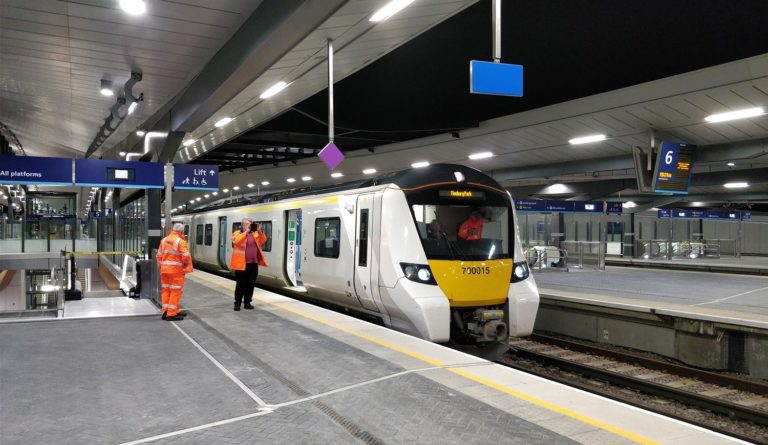Designing transport solutions that support thriving societies in increasingly constrained urban environments is a complex task.
Understanding this challenge is critical to developing the right solution and cultivating innovation to deliver end-users and stakeholders the benefits of increased capacity, efficiency and productivity of our transport systems. Traditionally, while we have learned to tackle difficult and complicated problems by dissecting our subjects into parts to understand them better, the rising complexity of transport systems and the impacts of new technologies makes the strong case for a ‘systems approach’.
More and more, systems engineering is being adopted in the transport industry due to its ability to capture client and stakeholder needs, develop capabilities, improve processes by articulating physical and functional outcomes from a system, and synthesise the requirements of a system and its components early in the project life cycle. The benefit of starting at the beginning of the project life cycle is that a valid solution is found the first time around and can be matured from early feasibility through multiple concepts and then final design.
“Systems Engineering provides variety of processes and tools to improve the probability of successful delivery of complex infrastructure and technology projects, enhancing the overall capability of a system and deliver better outcomes for stakeholders and users,” says Adrian Megaw, WSP’s Systems Engineering and Rail Operations Team Lead.
The Systems Process

A systems approach begins with defining the problem to be solved – this becomes crucial when working on large, complex projects with various stakeholders, suppliers and contractors all bringing their own competing (equally important) interests to the table. The systems approach involves integrating as many of these interests into the overall solution.
“As we embark on larger and more complex projects dedicated Systems Engineers can translate the purpose and drivers for a project into the system’s functional and physical requirements and then integrating the sub-systems to deliver the desired outcomes which allows discipline engineers to focus on their area of expertise,” adds Mr Megaw.
“Inevitably this lends itself to a greater level of innovation, and allows for informed decision making between trade-offs, that supports identification of an optimal and integrated outcome.”
Road Map to Success
Comprehensive systems frameworks like the SID3 approach – so named for the three components: Develop, Define and Deliver – can be applied holistically, individually or developed bespoke on a project. Since a good systems approach starts early in the project life cycle, the ‘Develop’ stage should be aimed at understanding and clearly defining outputs to deliver a clear ‘Road Map to Success’.

Following development of the strategy, the focus in the ‘Define’ phase is to effectively develop a blueprint for the integrated delivery of output performance. As the project reaches detailed design, implementation and commissioning, the systems integration function builds on the previous layers within the framework, focusing on robust systems engineering techniques and established management processes to deliver the desired result. Delivering a truly integrated outcome depends on a comprehensive understanding and framing of the problem during the earlier phases, in order to deliver an effective output when applying the SID3 framework throughout the project lifecycle.

Systems Engineering in Practice
THAMESLINK PROGRAMME:
The Thameslink Programme revolutionises the North-South mainline railway connectivity through the heart of London. Set for completion by the end of 2018, Thameslink will see a massive 24 trains per hour (tph) travel along the route and the introduction of complex digital train railway operations technology with the use of ETCS Level 2 on a mixed traffic corridor.
Implementing digital railway technology is essential to the efficient ordering of trains to safely achieve management of 24tph is achievable. Systems engineering was the solution used to engineer the process and holistically manage the collection and configuration control of all data that the Thameslink Programme is mandated to provide to the Traffic Management System (TMS) supplier. Such data has been critical to developing an accurate internal ‘model’ of the Thameslink Infrastructure for the TMS.
GREATER WEST PROGRAMME:
Network Rail’s Greater West Programme (formerly Great Western Route Modernisation) aims to deliver a significant improvement in the performance, capacity and connectivity across the Western and Wales Routes.
Systems engineering and integration was successfully applied to a combination of programme management, systems engineering and stakeholder communication tools and techniques to support programme integration across industry stakeholders. The bespoke system was tailored to the specific technical, operational and functional context of the project, ensuring effective and efficient integration management to support cohesive delivery.
The Future of Systems Engineering
The implementation of systems engineering internationally on rail projects like Thameslink and Great Western Upgrade in the United Kingdom has helped pave the way for Australian systems projects such as the Southern Program Alliance and QR ETCS Level 2.
“Systems engineering will become an increasingly integral part of the project management approach demanded by clients to improve the likelihood of successful delivery of outcomes against time, cost, quality and safety,” concludes Mr Megaw. “Defining requirements as a core part of systems engineering and specify the systems performance and function that allows contractors, suppliers and consultants greater freedom to innovate and deliver value for money.
“Crucial to achieving this is understanding user needs and stakeholder requirements. Well-developed business requirements and a ‘Concept of Operations’ is integral to the strategic goal definition and provides the foundation to understand stakeholders, governance and integration.”
For more information, read:
- ‘Picture This!’, Provoking Stakeholder Engagement Through Diagrammatic Iteration, by John Welford, James Scotter, Monica Dryden
- RAM Targets and Tools for Rail Systems, by Steven Boldeman
References








